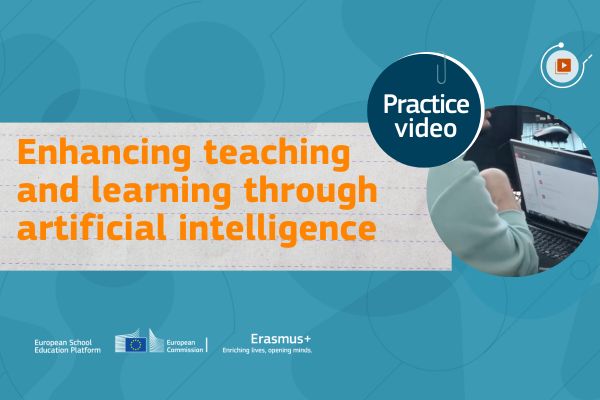Enhancing teaching and learning through artificial intelligence

Fabrice Roth, Headmaster
The Lycée des Arts et Métiers is a 128-year-old school, with a very long history, which has always been at the forefront of technology and innovation. And that's why, around a year ago, we started looking at artificial intelligence. How can we bring it into education? And we were delighted to see the 'AI for Teachers' programme. We have several teachers who have taken part in the training programme, and we had several school partners who also gave workshops during the programme. It's all about teaching our teachers to discover artificial intelligence and decide if it makes sense to use it and where.
Mario Marques Dos Santos, Computer science teacher
In the courses I teach, we're currently running an individual project for students on artificial intelligence. They have discussed their personal interests and are now using different forms of AI, not just text, but also images and video. And in the future, they will either be looking for a job or at university, where all this could be very useful.
Benoit Fortemps, TalentHub coordinator
I'm the coordinator of TalentHub, which is an initiative aimed at connecting education with the world of businesses, whether public, private or even not-for-profit. The aim of this initiative is also to see what's going on in companies and to identify their needs and demands and integrate them into training. Today, many of the companies we’ve interviewed have shown a huge interest in artificial intelligence and its day-to-day use. And that's what we're trying to promote when educating our young people.
Yoann, student
In this department, we study object design and modelling. And we still have to spend a lot of time modelling them. It can be very tedious. We need to get familiar with new tools, and the arrival of artificial intelligence into the world of products has made our work much easier. With just a few clicks, we can generate new ideas.
Gilles Gardula, Art teacher
I think we have an advantage with AI tools. It's going to simplify a lot of tasks for us, which will give us a bit more time to look after people and not waste so much time trying to give them technical skills that are very difficult to acquire. If they have to learn a 3D programme, it's extremely complicated and takes many years to learn. If they can now learn more quickly, it will allow us to have more time for other things.
Christian Frantzen, Art teacher
I often teach students how to work with ChatGPT so that they have a teacher, a coach at home, who allows them to learn everything at their level and in the relevant subject. These are not fixed prompts. There are no fixed parameters, meaning that the student has a scale, a system that works like an interview. It adapts to the student, their age and the subject.
I've just produced a GPT that is a professional career explorer. It asks for the user’s age and interests by giving them an interview. From there, it offers different fields of activity, which I call flowers; it's a game, a gamification, and the user will choose to visit a flower, a field of activity, which will suggest other activities. It looks at what they have done and their career path and tailors suggestions for suitable professional careers. What influenced me the most was our Blended platform, which I use a lot. My students work a lot on this platform and it allows my students, who are very independent, to work at their own pace during the course, because there are tutorials and so on. So I can really act like a coach.
Benoit Fortemps, TalentHub coordinator
We take note of the feedback we receive from companies and then work with our fellow teachers to see how we can align the needs of our young people with the training we offer them.
Additional information
-
Education type:Vocational Education and Training
-
Evidence:N/A
-
Funding source:N/A
-
Intervention level:N/A
-
Intervention intensity:N/A
-
Participating countries:Luxembourg
-
Target audience:TeacherStudent TeacherHead Teacher / PrincipalICT CoordinatorTeacher EducatorGovernment staff / policy maker
-
Target audience ISCED:Upper secondary education (ISCED 3)
